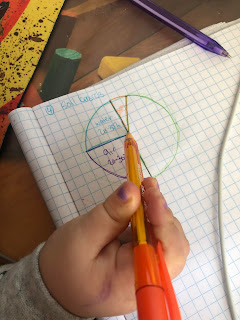History is under our feet
Maramataka
Tamatea-whakapau, a day to maintain patience and understanding. Well I have needed to practice patience with the preschooler today who insisted on helping me take notes for this module.
Planting food in the morning through to midday is optimal today and a good day to be out with Tāne Mahuta, refresh in the fresh air and listen to our surroundings.
A Welcome to Soils
The earth's body of soil is called the pedosphere and it acts as:
- a medium for plant growth
- a means of water storage, supply and purification
- a modifier of earth's atmosphere
- a habitat for organisms.
Effectively the soil of our earth is like an engine that needs to run smoothly to ensure all living things around us are sustained and survived.
Fun fact: in just one teaspoon of soil you would find more organisms than the world's population!
Soil provides the nutrients and support for plant life and no two patches of soil are the same.
History is told through our soil as well, we can see what happened 100s or even 1000s of years ago when exploring the horizons.
another fun fact is that middle aged soil is the most fertile; young soil hasn't developed the needed nutrients and old soil is generally 'washed out'.
We need to honour our soil, feed it and love it so in return the soil will nourish us through the plant and animal life it supports. Help the soil help us.
I never knew the huge complexities that surround soil, I knew there were layers and I knew it was full of soil critters but I didn't realise the processes that are need for rich deep soil and how time is a huge factor in getting well-developed fertile soil.
What soil does my region have?
My first task of my soil study module is to reflect upon the type of soil I would expect to find in my region.
According to a google search the climate I am currently in is warm and temperate with a decent amount of rainfall year round. We are 22m above sea level and the average annual temperature is 11.4 °C.
With this in mind I would expect to find a deep, developed and rich soil.
From what I have noticed since relocating here there is plant growth everywhere; every second neighbour has citrus trees growing in their yards showing to me we get the sunshine and warmth.
We have plenty of native plant life growing with their seedlings thriving beneath; we have kōwhai trees and harakeke everywhere - not to mention the cabbage trees and bamboo growing behind us.
Everywhere is lush green and flowering even in the middle of winter.
We are lucky to be in an area that most any plant will be nourished from beneath.
We are also surrounded by agriculture so the farmers know whats up too...
What are the main soil forming factors in my region?
The key formation factors of soil are remembered in the acronym CLORPT
- Climate
- Organisms
- Relief (topography)
- Parent Material
- Time
The soil in my region is effectively affected by all these factors.
Clearly climate is a main factor, we have sunny sunshine days that are balanced with rainfall.
W can vouch for the organisms that our soil is full with, she has spotted a trillion earthworms and other soil critters.
We live on a hill so relief is a factor; even around the property you can see there are significant differences in the soil structure. Out the front there is more constant sunshine so the soil is drier, out the back there are shaded areas where the soil is clearly richer - also helps that the fallen autumn leaves have provided a soil armour.
Out one side we have māunga, the other side we have the moana and beside us are veins of awa, I can assume that deep down the parent material is a varied nutrient rich base. An added factor is Aotearoa is quite geothermic with hot pools and volcanoes scattered everywhere which will add to the unique makeup of parent material deep down in our whenua.
And finally time, our soil has had plenty of time to develop and we are surrounded by untouched areas rich with plant growth which speaks volumes to what is beneath our feet.
Next time the sun is shining talk a walk and appreciate Papatūānuku, her soil and everything she adds beneath our feet to make sure we are fed and sheltered from her soil.



Comments
Post a Comment